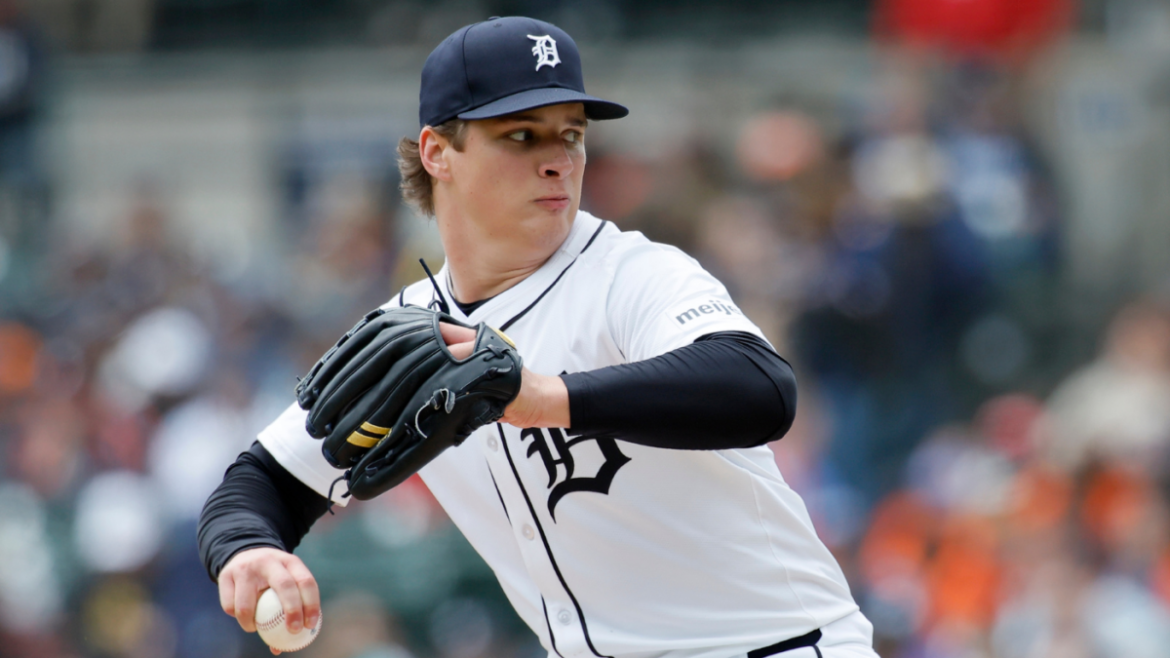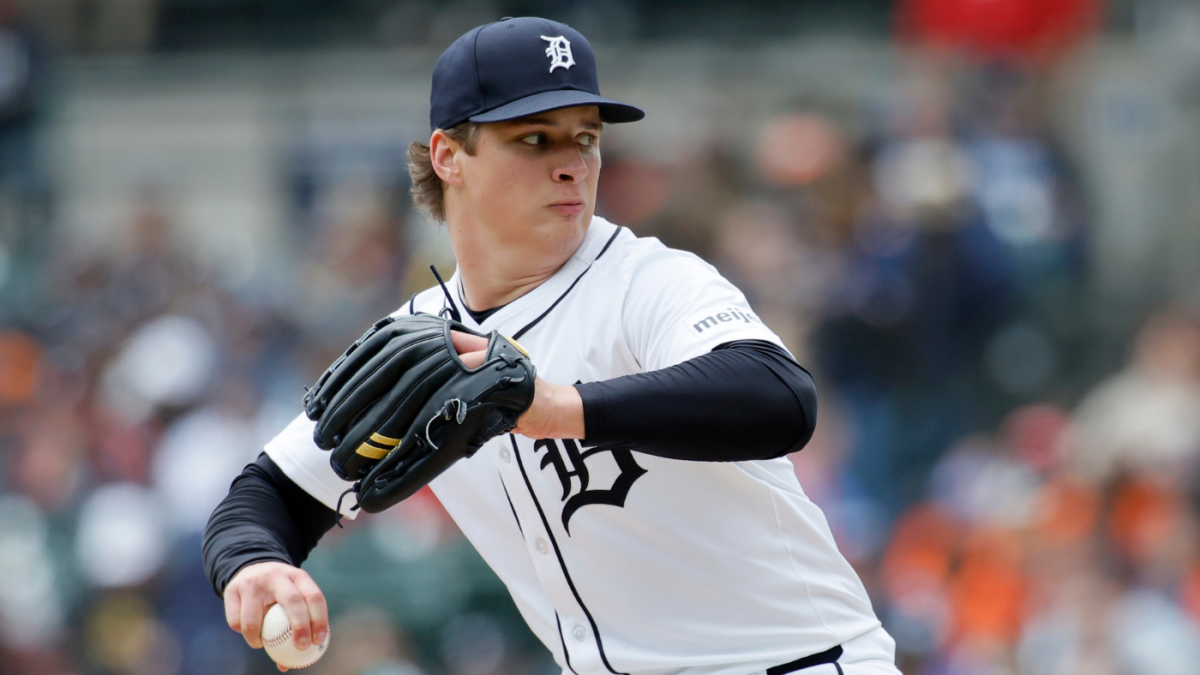Jackson Jobe’s Tommy John Surgery: Impact on the Detroit Tigers and His Career Trajectory
Introduction
Jackson Jobe, once hailed as the Detroit Tigers’ brightest pitching prospect and a rising star in Major League Baseball, faces a significant setback following the announcement of his upcoming Tommy John surgery. This procedure will not only sideline him for the remainder of the 2025 season but may extend his absence well into 2026, casting uncertainty on his short-term development and the Tigers’ pitching future. This report dissects the timeline of Jobe’s injury, the implications of his surgery on both his career and the Tigers’ roster, and what lies ahead for one of baseball’s most promising young arms.
Background and Injury Timeline
Entering the 2025 MLB season, Jackson Jobe was viewed as one of the premier pitching talents across the league. Selected third overall in the 2021 draft, he quickly ascended to prominence, generating considerable excitement as a rookie capable of anchoring Detroit’s rotation. During the 2025 campaign, Jobe made 10 starts, showcasing glimpses of his potential but also wrestling with inconsistency, exemplified by a 4.xxx ERA and signs of physical strain.
Jobe’s injury saga began in late May when he was placed on the 15-day Injured List (IL) with a Grade 1 flexor strain in his right arm, initially perceived as a mild issue. His last outing before the IL assignment was on May 28th, when he pitched 4 2/3 innings against the San Francisco Giants, allowing three runs on seven hits with four strikeouts and three walks. However, the situation evolved rapidly, culminating in the decision for Tommy John surgery to reconstruct his right ulnar collateral ligament (UCL) – a procedure notorious for its lengthy rehabilitation process.
Understanding Tommy John Surgery and Recovery Expectations
Tommy John surgery, while common among pitchers, poses a substantial hurdle. It involves replacing the damaged UCL in the elbow, often necessitated by repetitive stress injuries typical in high-velocity pitching. The surgery’s recovery period generally spans 12 to 18 months, with gradual progression from rest to throwing programs and eventually competitive pitching. Given that Jobe is already on the IL with a significant flexor strain, this surgery effectively signals the end of his 2025 season and casts doubt on his ability to return before late 2026.
For a young pitcher, the surgery’s outcome can vary widely. While many return to their previous form or better, setbacks and extended rehabilitation periods are not uncommon. Thus, Jobe’s immediate future includes missing major playing time and dedicating himself to recovery, while navigating the physical and mental challenges inherent in such an operation.
Implications for the Detroit Tigers
Jobe’s injury is more than a personal setback; it reverberates throughout the Tigers organization. Detroit emerged as the AL Central leaders with a strong season start, buoyed partly by the promise of a rejuvenated rotation anchored by youthful talents like Jobe. His absence creates a gap in the starting rotation, one that the Tigers will need to fill with current roster members or minor league call-ups—such as rookie right-hander Dylan Smith, who has already been promoted to bolster pitching depth.
The delay in Jobe’s progression means Detroit might have to recalibrate their long-term plans for rotation stability. As Jobe was seen as a potential Rookie of the Year candidate and a central piece of the pitching staff for years to come, the team will need to rely on other starters while also managing expectations around the timeline for his return.
Jackson Jobe’s Career Outlook Post-Surgery
Despite the immediate disappointment, Jobe’s career still holds promise. Before his injury, he demonstrated the talent and potential to become a frontline starter in the majors. His age, just 22 years old, provides a window for recovery and eventual resurgence.
The key factors determining his career trajectory post-surgery include his rehabilitation diligence, physical adaptability, and mental resilience. MLB history shows many pitchers overcome Tommy John surgery and return to peak performance, though the path is rarely linear. For Jobe, maintaining technique, pacing recovery, and avoiding reinjury will be crucial.
Moreover, the Tigers’ medical and coaching staff will play integral roles in guiding and supporting his return, mitigating pressure to rush back prematurely. While the 2025 and likely much of the 2026 seasons are lost to recovery, Jobe’s potential remains untarnished if managed carefully.
Conclusion: Navigating a Challenging Crossroads
Jackson Jobe’s announcement to undergo Tommy John surgery marks a pivotal moment—not only in his budding career but also for the Detroit Tigers’ pitching ambitions. The injury truncates what was shaping up to be a breakout rookie season and ushers in an extended recovery period fraught with uncertainty. Nevertheless, Jobe’s youth and proven talent offer hope that, with patient rehabilitation, he can return to MLB competition and fulfill the promise that made him a top draft pick and a cornerstone of Detroit’s future.
For the Tigers, the immediate challenge is to adapt their pitching staff to fill the void left by Jobe’s absence while maintaining their winning momentum. Long-term, investing in Jobe’s health and gradual return will be an exercise in balancing urgency with prudence.
Ultimately, this chapter, though difficult, could become a transformative comeback story—illustrating the resilience needed to thrive in professional sports grounded in physical endurance and mental fortitude. Jackson Jobe’s next steps will be closely watched by fans and analysts alike, hopeful that the foundational talent and tenacity which brought him to the majors will carry him through recovery and back onto the mound stronger than ever.





